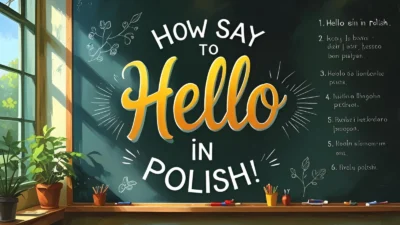Learning how to say yes in Italian is one of the first steps to sounding natural when speaking the language.
The most common word is sì, but Italians also use many other expressions like certo (of course) or va bene (okay) depending on the situation.
By exploring these variations, you’ll be able to agree, confirm, and respond confidently in everyday Italian conversations.
Say Yes in Italian 🇮🇹
✅ 15 Ways: How to Say Yes in Italian
| # | 🟦 Italian Phrase | 🟩 Pronunciation | 🟨 English Meaning | 🟧 Usage |
|---|---|---|---|---|
| 1 | Sì | See | Yes | Standard, universal |
| 2 | Certo | Cher-to | Of course | Polite, confident |
| 3 | Va bene | Va beh-neh | Okay / Alright | Casual, common |
| 4 | Assolutamente | Ah-sso-loo-tah-men-te | Absolutely | Strong agreement |
| 5 | Sicuro | See-koo-ro | Sure | Casual confirmation |
| 6 | Esatto | Eh-zaht-to | Exactly | Agreeing with someone |
| 7 | D’accordo | Da-kor-do | Agreed / Okay | Formal or neutral |
| 8 | Proprio così | Pro-pree-o ko-zee | Exactly so | Emphatic yes |
| 9 | Giusto | Joo-sto | Right / Correct | Agreement |
| 10 | E certo | Eh cher-to | And of course | Emphatic, natural |
| 11 | Ma sì | Ma see | Yes, of course | Relaxed, informal |
| 12 | Senza dubbio | Sen-za doob-byo | Without a doubt | Strong yes |
| 13 | Ovviamente | Ov-vya-men-te | Obviously | Agreeing naturally |
| 14 | Ci mancherebbe | Chee man-keh-reb-beh | Of course / No problem | Very polite |
| 15 | Altroché | Al-tro-keh | Absolutely! / Sure! | Energetic yes |
Here are 15 ways to say yes in Italian, complete with real-life dialogue examples and fascinating cultural insights!
1. Sì (Yes)
Origin:
Derived from Latin sic est (“thus it is”), sì is the standard Italian word for “yes.”
Example:
👤 User A: Vuoi un caffè? (Do you want a coffee?)
👤 User B: Sì, grazie! (Yes, thanks!)
Use: Universal, formal or casual. Use it in nearly any situation.
2. Certo (Of course / Certainly)

Origin:
From Latin certus, meaning “sure.” It implies strong agreement.
Example:
👤 User A: Posso sedermi qui? (Can I sit here?)
👤 User B: Certo! (Of course!)
Use: Friendly, polite, and confident agreement.
3. Sicuro (Sure)
Origin:
Also from Latin securus, meaning “safe” or “sure.” Similar to certo but slightly more casual.
Example:
👤 User A: Sei libero stasera? (Are you free tonight?)
👤 User B: Sicuro! (Sure!)
Use: Informal, used among friends.
4. Va bene (Okay / All right)

Origin:
Literally “it goes well,” this is widely used for agreement and approval.
Example:
👤 User A: Ci vediamo alle 8? (See you at 8?)
👤 User B: Va bene! (Okay!)
Use: Very common and neutral; casual tone.
5. D’accordo (Agreed / Alright)
Origin:
Means “in agreement.” Often used in formal or collaborative situations.
Example:
👤 User A: Facciamo una pausa adesso? (Shall we take a break now?)
👤 User B: D’accordo. (Agreed.)
Use: Formal or polite agreement, also in professional settings.
6. Esatto (Exactly / That’s right)

Origin:
From Latin exactus, meaning “precise.” Often used to agree with someone’s statement.
Example:
👤 User A: Quindi è il tuo compleanno oggi? (So it’s your birthday today?)
👤 User B: Esatto! (Exactly!)
Use: Confirms a correct assumption or fact.
7. Ovviamente (Obviously / Of course)
Origin:
Derived from ovvio (obvious). Used when something is clear or self-evident.
Example:
👤 User A: Vieni alla festa domani? (Are you coming to the party tomorrow?)
👤 User B: Ovviamente! (Obviously!)
Use: Casual and confident, sometimes slightly sarcastic.
8. Assolutamente (Absolutely)
Origin:
From Latin absolutus. Used to give strong affirmation or certainty.
Example:
👤 User A: Sei sicuro di volerlo fare? (Are you sure you want to do it?)
👤 User B: Assolutamente. (Absolutely.)
Use: Formal or strong emphasis.
9. Eh già (Yeah, right / Yep)
Origin:
Slang-like expression common in informal Italian. “Eh” adds emphasis; già means “already” or “indeed.”
Example:
👤 User A: È difficile, vero? (It’s tough, right?)
👤 User B: Eh già. (Yeah, it is.)
Use: Casual and often reflective.
10. Magari! (I wish! / If only!)
Origin:
From Latin magis (more). While not a literal “yes,” it’s an enthusiastic hopeful agreement.
Example:
👤 User A: Vuoi vincere alla lotteria? (Do you want to win the lottery?)
👤 User B: Magari! (I wish!)
Use: Emotional and expressive; hopeful agreement.
11. Ma certo! (But of course!)
Origin:
Adding ma (but) for emphasis makes it sound more enthusiastic.
Example:
👤 User A: Posso contare su di te? (Can I count on you?)
👤 User B: Ma certo! (But of course!)
Use: Friendly and reassuring.
12. Perché no? (Why not?)
Origin:
Often used as a positive response to a suggestion. Similar to English usage.
Example:
👤 User A: Ti va una pizza? (Want a pizza?)
👤 User B: Perché no? (Why not?)
Use: Casual and slightly playful.
13. Sì sì! (Yes, yes!)
Origin:
Doubling sì adds excitement or urgency, just like saying “yes, yes!” in English.
Example:
👤 User A: Hai capito? (Did you understand?)
👤 User B: Sì sì! (Yes, yes!)
Use: Emphatic or slightly impatient agreement.
14. E come no! (Of course! / Obviously!)
Origin:
Literally: “And how not?” – a humorous and passionate way to say yes.
Example:
👤 User A: Hai voglia di gelato? (Feel like ice cream?)
👤 User B: E come no! (Of course!)
Use: Very informal, full of Italian flair.
15. Con piacere (With pleasure)
Origin:
Used formally when offering help or responding to a polite request.
Example:
👤 User A: Mi accompagni al mercato? (Will you come to the market with me?)
👤 User B: Con piacere. (With pleasure.)
Use: Polite and gracious.
Conclusion:
Understanding how to say yes in Italian goes beyond the simple word sì. With phrases like certo, assolutamente, and va bene, you can respond more naturally in different contexts.
By learning these expressions, you’ll not only improve your fluency but also connect more authentically with Italian speakers.



